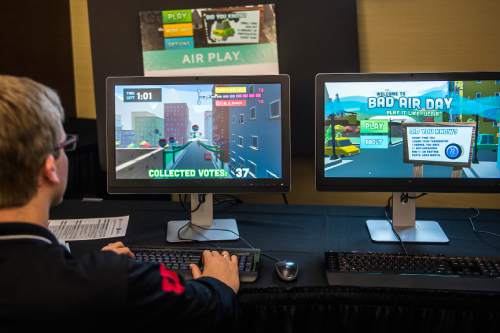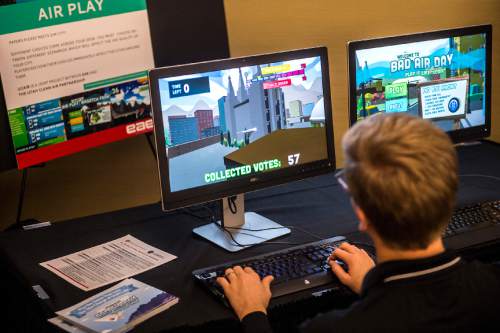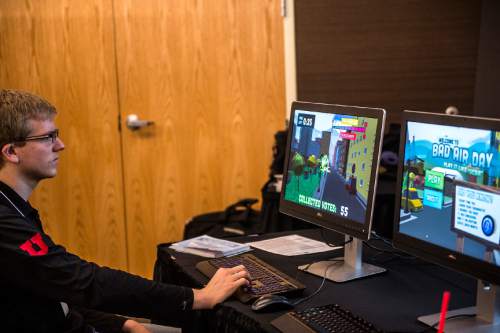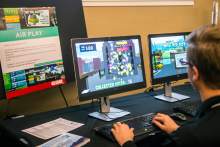This is an archived article that was published on sltrib.com in 2015, and information in the article may be outdated. It is provided only for personal research purposes and may not be reprinted.
When it's gunky outside, the last thing you want to do is send the kids out to play.
Now there's an alternative that covers the bases — both educational and entertaining — for bored teenagers malingering inside during Wasatch Front inversions:
"Bad Air Day: Play It Like 'UCAIR'," a new Web-based game developed at the University of Utah, lets players pretend they're the mayor, trying to collect votes by flying a paper airplane through a changing 3-D model of Salt Lake City. How well they do collecting votes depends on the public policy decisions they make about air quality.
Along the way, players learn about the choking pollution that plagues northern Utah valleys during the winter.
"We believe that natural learning occurs through play, through experimentation," said Roger Altizer, director of game design and production for the university's video game program. "Our big goal is for students to play with the information. We believe they will learn more about local air-quality when they have fun exploring it. The air-quality game has a chance to make a real difference in Utah."
Bad Air will get its first test run in Utah high school classrooms this winter, but also is available free to download for PCs and Macs at BadAirDay.org.
Before taking off, Bad Air players have to decide whether to ban wood fireplaces, boost public transportation or urge residents to lower their home thermostats to cut emission levels.
The game will reveal the impacts of those decisions. Players who make decisions that help an inversion build could end up with a city covered in smog, which makes it more difficult to fly the plane. But players whose decisions result in cleaner air, but cause inconvenience for voters, may bump up against a "Wall of Public Anger" that blocks vote collection.
University chemical engineering research associate Kerry Kelly, who first came up with the idea for the game, wanted high school students and teachers to start thinking critically about air quality.
"We're hoping it will inspire curiosity" about what causes murky air in Utah, she said Tuesday.
A team of more than 10 people, including four graduate students, worked on the game for more than five months.
James Hulse, a master's student in game design and one of Bad Air's creators, said most environmental games restrict players to two dimensions and little decision-making. This game aims to change that, he said, as he flew the virtual paper plane around smoggy city blocks.
So far, Hulse and others have observed 15- to 17-year-old students as they tried out the game.
"They're still learning what decisions they need to make to make [the air quality] bad. Conversely, they know, 'If I don't do that, it's going to help the air quality'," Hulse said. "They're just starting to drive and starting to learn, 'OK, driving a lot is going to hurt the environment'."









